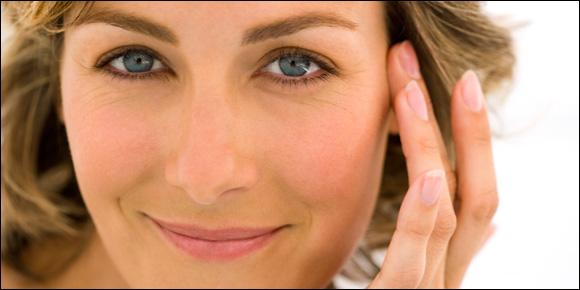What is a Chemical Peel?
A specific liquid solution is applied to the face, either left on or washed off (depending upon the type of peel). This solution will cause the skin to slough off and reveal smoother, and less wrinkled skin. Chemical peels can be applied to the face, neck, and even your hands to reveal brighter new skin.
Benefits of a Chemical Peel:
- Reduce fine lines and wrinkles
- Enhances and smooths texture of the skin
- Improve the overall feel of your skin
- Smooth wrinkles from the aging process
- Calm some types of acne
- Reduces dark spots from aging, freckles, and melasma
- Improve some types of sun damage
- Provide a soft, glowing and healthy colored surface
Who is a Candidate For a Chemical Peel?
Everyone is a candidate for a chemical peel, however the type of peel is just as important as understanding the different skin types in selecting the appropriate peel for the best outcome.
Fair skinned people are usually the best candidates, as their skin usually will not risk developing hyperpigmentation (brown spots). Darker skinned individuals risk developing more uneven skin tone (especially if the correct chemical peel is not elected) following the peel.
What Type of Skin Does Not Respond Well to a Chemical Peel?
Those patients wanting to improve the look of saggy skin, bulges, and severe wrinkling will not be overjoyed with a chemical peel. These issues are better addressed with more aggressive procedures such as laser resurfacing, and/or cosmetic surgical enhancements.
How to Choose The Best Chemical Peel For Your Skin:
Chemical peels very all the way from a light “lunch time peel,” with minimal social down time, all the way to requiring sedation with a great amount of social downtime.
Discuss with your provider what outcomes you desire, along with what your skin needs are, and the appropriate chemical peel can be selected for you.
How is a Chemical Peel Done?
Most chemical peels are offered in Dermatology offices, and are a fairly simple procedure not requiring an overnight stay. First your face is cleansed, then a peel solution is applied. Some solutions are washed off after a few minutes of exposure, while others are left on for the next 24 hours. While the peel solution is being applied you may feel a tingling or even a burning sensation depending upon the type being applied. More aggressive peels may require minimal sedation during the procedure, and you may be sent home with a pain medication.
What to Expect After a Chemical Peel:
Patients typically report a sensation of a mild sunburn afterwards. A milder peel will be followed by dry skin that sloughs off over the next 4-7 days. Milder peels can be repeated at 4-6 week intervals for best results.
With medium to deep chemical peels (will have a lot more discomfort during the chemical application) you will notice possible blistering along with swelling, that eventually crusts over and turns brownish. Over the course of a week (up to 2 weeks) the skin will slough off. This more aggressive peels are better done once or twice a year.
Remember the importance of applying a daily sunscreen, and if at all possible avoid the sun for several months after a peel. Also, it is important to avoid use of exfoliants after for about 2 weeks after the peel.
Types of Chemical Peels:
- Alpha Hydroxy Acids (AHA), Citric Acid - Derived from the natural acids of fruit. This is a very light chemical peel with little to no social downtime, and frequently in at home treatments. Typically this is a known as a “lunchtime peel.” Minimally invasive, and take a series of several treatments for a noticeable improvement.
- Glycolic Acid - Derived from sugar cane. This penetrates the skin the deepest and is great for exfoliation and rejuvenation. Glycol peels are offered in different strengths, and the stronger the solution the more aggressive the peel will be. Social downtime is determined by the depth/strength at which you choose to be treated.
- Lactic Acid - Derived from sour milk and is great for sensitive and dry skin. For those very sensitive skin types this is the best option, with minimal social downtime.
- Malic Acid - Derived from apples. This is a combination chemical peel containing: Citric, lactic, glycolic, and tartaric acids. It can also be used as a lunchtime peel, or made slightly more aggressive. However, it provides very little social downtime and gives radiant, healthier looking skin. Minimally invasive, and take a series of several treatments for a noticeable improvement.
- Salicylic Acid - Great for acne treatment in all skin ages. This will exfoliate, diminish oil production and fight bacteria that causes acne. This is commonly an ingredient in at home skin care treatments for acne, and offers little to no social downtime. Yet, provides great benefits for acne treatment and overall maintenance.
- Trichloroacetic Acid (TCA), Phenol - Medium depth to deep peels, and commonly used for very sun damage or severely aged skin. Can be very aggressive with this peel when used in higher strengths, with a longer social downtime, yet significant cosmetic benefits. TCA peels are preferred for darker skin types. The Phenol peel is only suitable for the face, and not recommended for other body regions. Either of these peels require a significant amount of social downtime, and frequently I recommend taking a week off of work.
Costs For Chemical Peels:
Prices will vary from state to state but can range from $100 all the way up to $3,000 plus. Keeping in mind the higher price range is going to be for the most aggressive peels.


